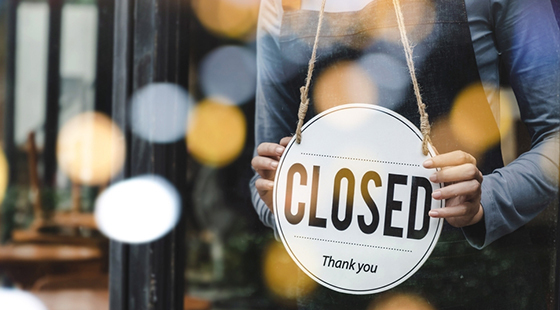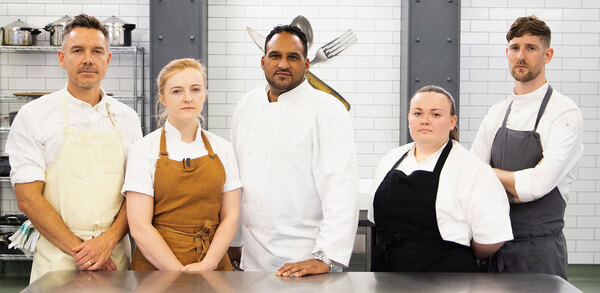New guidelines for restaurants include rules on social distancing, signage and hygiene
A set of guidelines has been released for eight industries, including “restaurants offering takeaway and delivery” to help employers, employees and the self-employed work safely during the Covid-19 pandemic as lockdown restrictions ease.
While all restaurants should continue to be takeaway only, with all bar areas, seated restaurants and café areas closed to the public, the document entitled 'working safely during COVID-19 in restaurants offering takeaway or delivery' , drawn up by the Department for Business, Energy and Industrial Strategy (BEIS), states its intention to provide “freedom within a practical framework” for operators to make practical adjustments to the way they operate post-Covid.
The document, produced in consultation with Public Health England (PHE) and the Health and Safety Executive (HSE), states that all businesses, including bars, pubs and restaurants operating as takeaways, cafés and food-to-go outlets, are required to carry out an appropriate Covid-19 risk assessment in consultation with unions or workers, with “increasing the frequency of hand washing and surface cleaning” topping the list.
As with all sectors, only those who are “essential” in the workplace should go in and employers were to plan for the “minimum number of people needed on the premises to operate safely and effectively.”
The guidelines around social distancing include using screens or barriers to separate people from each other where social distancing “cannot be followed in full in relation to a particular activity” and adopting a back-to-back or side-to-side working arrangement, rather than working face-to-face is required.
To reduce crowding at pinch-points in and out of the workplace, shifts should be staggered so that staff arrive and leave the premises at different times and creating a rotating “fixed-teams or partnering” system is recommended to reduce the number of individuals each person has contact with.
For staff who wear uniforms, providing storage for staff clothes and bags, as well as appropriate changing room areas, would also be required, allowing staff to change into work uniforms on site and to leave them on site after shifts, rather than taking them home.
In terms of food preparation, the guidelines recognise the “difficulty of moving equipment such as sinks, hobs and ovens” and suggest installing “cleanable panels to separate workstations” in larger kitchens, as well as minimising access to walk-in pantries, fridges, freezers and stock-rooms by restricting access for one person at a time via a one-way flow of traffic.
To ensure social distancing in common areas, the guidelines advise staggering break times, making use of outside areas for breaks and creating “additional space by using other parts of the working area or building that have been freed up by remote working”.
In front of house areas, installing screens to protect staff serving customers at till points is required and to minimise contact between restaurant staff and external suppliers and partners, it suggests demarcating zones from which drivers can collect or drop off food items.
Providing signage for customers collecting takeaways and making “regular announcements” to remind customers to follow social distancing rules and to wash their hands regularly is also recommended.
For businesses with several or large sites, employers are requested not to rotate staff across locations and to keep staff to dedicated floors within one site.
All paper menus are to be disposed of after each use and laminated menus must be thoroughly cleaned between use. Disposable paper towels are favoured over electric hand-driers.
While wearing a face covering is “optional and is not required by law, including in the workplace” the guidelines state that employers should support their workers in using face coverings safely if they chose to wear one.
The guidance does not contain details of how operators might resume a full, sit-in service once lockdown restrictions are lifted but states that “no one is obliged to work in an unsafe environment.”



















